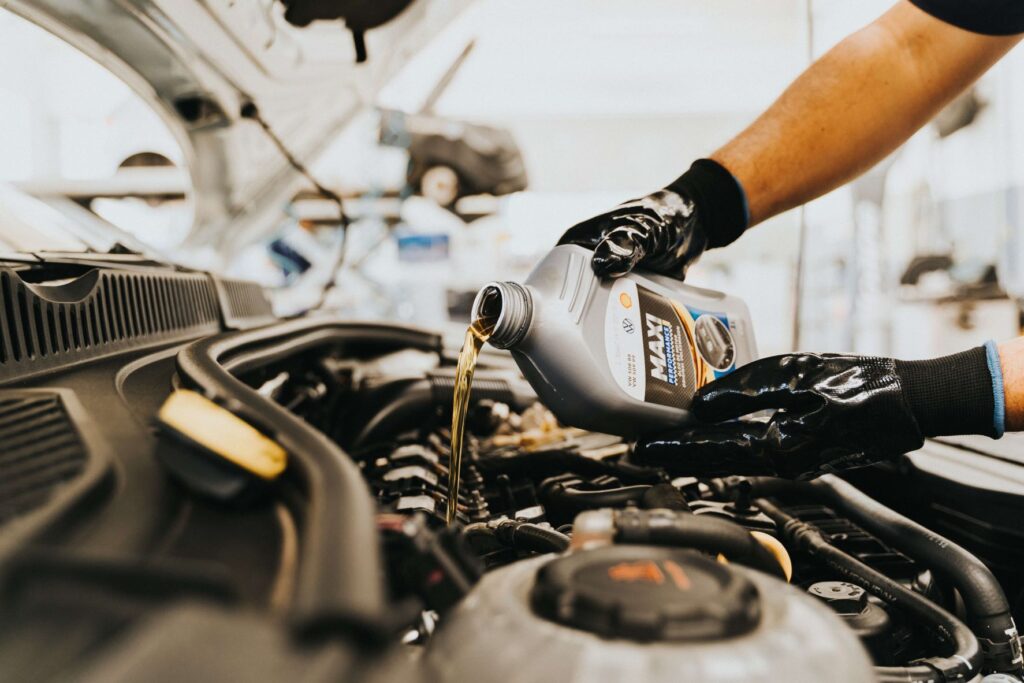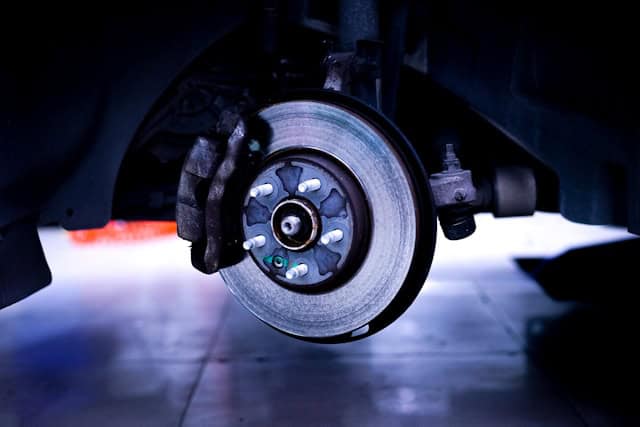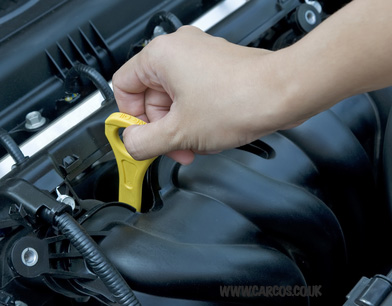As a car owner in the UK, dealing with common car problems can be frustrating and costly. Whether you’re commuting through busy London streets or navigating rural roads in Yorkshire, unexpected issues like a flat battery or squeaky brakes can disrupt your day. According to recent data from motoring organisations, millions of breakdowns occur annually across the UK, with many stemming from preventable maintenance oversights. At Car Cosmetics, based in Leeds, West Yorkshire, we specialise in mobile car body repairs to keep your vehicle looking and performing its best. In this comprehensive guide, we’ll explore the top 14 most common car problems, their causes, symptoms, fixes, and—most importantly—how to avoid them. By staying proactive, you can save time, money, and hassle.
Table of Contents
ToggleUnderstanding these common car problems is essential for safe driving and passing your annual MOT test. From mechanical failures to cosmetic damage, we’ll cover a range of issues that affect everything from family saloons to high-end SUVs. Let’s dive in and empower you with the knowledge to keep your car running smoothly.
1. Common Car Problems: Dead or Flat Battery
One of the most prevalent common car problems in the UK is a dead or flat battery, especially during cold winters when sub-zero temperatures can drain power quickly. Batteries typically last 3-5 years, but factors like short trips or leaving lights on accelerate failure.

Causes
Common causes include age-related degradation, where the battery’s ability to hold a charge diminishes over time. Electrical faults, such as a faulty alternator failing to recharge the battery while driving, are also frequent culprits. In the UK, where stop-start city driving is common, batteries endure more strain from frequent engine restarts.
Symptoms
You’ll notice dim headlights, a clicking sound when turning the key, or the engine failing to start altogether. Dashboard warning lights may flicker, and accessories like the radio might cut out intermittently.
How to Fix
Jump-starting with cables from another vehicle is a temporary solution, but replace the battery if it’s over three years old. Professional testing at a garage can confirm if the alternator or wiring is at fault. At Car Cosmetics, while we focus on bodywork, we recommend partnering with trusted mechanics for electrical diagnostics.
How to Avoid
Regularly check your battery’s voltage with a multimeter—aim for 12.6 volts when off and 13.7-14.7 when running. Avoid short trips that don’t allow full recharging, and invest in a trickle charger for vehicles parked for extended periods. During UK winters, park in a garage to shield from cold snaps.
By addressing battery issues early, you prevent being stranded on the motorway, a scenario that affects thousands of drivers yearly according to AA reports.
2. Common Car Problems: Flat or Damaged Tyres
Flat or damaged tyres are among the most frequent common car problems for UK drivers, with over 500,000 pothole-related incidents reported annually on roads from bustling Birmingham to rural Cornwall. Caused by punctures from debris like nails or glass, underinflation leading to blowouts, or sidewall damage from hitting kerbs or potholes, these issues can compromise safety and lead to MOT failures, as tyres must maintain a minimum tread depth of 1.6mm.
Symptoms include a sudden pull to one side, a thumping noise while driving, or a lit Tyre Pressure Monitoring System (TPMS) warning light. In this section, we’ll dive into the causes, symptoms, fixes, and prevention strategies for flat or damaged tyres, ensuring your vehicle remains roadworthy.

Causes
Punctures from nails, glass, or debris are primary, but underinflation leads to uneven wear and blowouts. Over time, tyres lose pressure naturally—about 1-2 PSI per month—exacerbated by temperature changes.
Symptoms
A hissing sound, sudden pulling to one side, or a thumping noise while driving signals a flat. Visually, tyres may appear sagging, and the TPMS (Tyre Pressure Monitoring System) light will illuminate on modern cars.
How to Fix
Use a spare tyre or repair kit for roadside fixes, but professional patching or replacement is ideal for safety. In the UK, tyres must have at least 1.6mm tread depth to pass MOT; anything less requires immediate action.
How to Avoid
Check tyre pressure monthly using a gauge, inflating to the manufacturer’s recommended PSI (found in your manual or door jamb). Rotate tyres every 6,000 miles and inspect for cracks or bulges. Avoid overloading your vehicle, which strains tyres, and report potholes to local councils via apps like FixMyStreet.
Proper tyre maintenance not only avoids flats but improves fuel efficiency by up to 3%, saving on petrol costs amid rising UK fuel prices.
3. Common Car Problems: Engine Overheating
Engine overheating is a serious common car problems that UK drivers frequently encounter, particularly during summer traffic jams on motorways like the M25 or in stop-start city driving in places like Leeds. This issue, which can lead to severe engine damage such as warped cylinder heads or blown gaskets, often results from low coolant levels, a faulty thermostat, or a malfunctioning water pump, with repair costs potentially exceeding £1,000.
Symptoms include a temperature gauge spiking into the red, steam rising from the bonnet, or a sweet coolant smell, signalling the need for immediate action to prevent breakdowns and ensure road safety. In this section, we’ll explore the causes, signs, solutions, and preventive measures for engine overheating, helping you keep your vehicle running smoothly.

Causes
Low coolant levels from leaks, a faulty thermostat stuck closed, or a broken water pump prevent proper heat dissipation. Blocked radiators from dirt or corrosion are also common car problems in older vehicles.
Symptoms
The temperature gauge rises above normal, steam emerges from the bonnet, or a sweet smell indicates coolant boiling. In severe cases, the engine may seize.
How to Fix
Pull over safely, let the engine cool, then top up coolant. If leaks persist, replace hoses or the radiator. Professional diagnostics are crucial to avoid further damage.
How to Avoid
Flush and replace coolant every 2 years or 30,000 miles. Regularly check for leaks under the car and ensure the cooling fan operates. In heavy traffic, turn off air conditioning to reduce engine load.
Preventing overheating extends engine life, potentially avoiding bills exceeding £1,000 for major repairs.
4. Brake Issues (Worn Pads or Squeaking)
Brake issues, such as worn pads or squeaking, are among the most critical common car problems for UK drivers, compromising safety on slick roads from Glasgow to London, where wet conditions amplify stopping distances. Often caused by friction-related wear, rust from moisture, or contaminated brake fluid, these problems can lead to reduced braking efficiency, MOT failures, and increased accident risk, with faulty brakes contributing to 10% of UK road collisions.
Symptoms like squealing noises, a spongy pedal, or vibrations demand immediate action to ensure safe driving. In this section, we’ll examine the causes, symptoms, fixes, and prevention tips for brake issues, empowering you to maintain reliable stopping power.

Causes
Pads wear down from friction, typically lasting 30,000-50,000 miles. Rust on discs from moisture or contaminated fluid accelerates issues.
Symptoms
Squealing or grinding noises, a spongy pedal, or vibrations when braking. The brake warning light may activate.
How to Fix
Replace pads and resurface or replace discs if scored. Bleed the system to remove air bubbles. Always use quality parts compliant with UK standards.
How to Avoid
Inspect brakes during services, avoiding aggressive driving that hastens wear. Use engine braking on descents and keep fluid levels topped up.
Safe brakes are vital; faulty ones contribute to 10% of UK road accidents, per government stats.
5. Common Car Problems: Electrical Faults
Electrical faults are a frustratingly common car problems for UK drivers, disrupting everything from headlights to infotainment systems on busy roads like the A1 or quiet lanes in West Yorkshire. Caused by factors such as corroded wiring, blown fuses, or rodent damage—exacerbated by the UK’s damp climate—these issues can lead to unreliable performance, MOT failures, and costly repairs.
Symptoms like flickering lights, non-functional accessories, or unexpected warning lights demand prompt attention to ensure safe driving. In this section, we’ll explore the causes, signs, solutions, and preventive measures for electrical faults, helping you keep your vehicle’s systems in top shape.
Causes
Corrosion in connections, especially in damp UK weather, or short circuits from rodent damage. Overloaded systems from aftermarket accessories strain the setup.
Symptoms
Intermittent power to components, flickering lights, or non-functional windows. Diagnostic trouble codes (DTCs) can be read with an OBD scanner.
How to Fix
Trace and repair wiring, replace fuses, or update software in modern cars. Professional auto-electricians handle complex issues.
How to Avoid
Keep the battery clean and secure connections. Avoid cheap accessories and have electrics checked during MOT prep.
Addressing electrics early prevents breakdowns, a leading cause for RAC callouts.
6. Common Car Problems: Oil Leaks
Oil leaks are a sneaky yet pervasive common car problems for UK drivers, often leading to serious engine damage if left unaddressed, whether you’re driving through the bustling streets of London or the quiet roads of West Yorkshire. These leaks, typically caused by worn gaskets, degraded seals, or cracked sumps, can result in low oil levels, increased friction, and costly repairs, with engine rebuilds potentially exceeding £2,000.
Symptoms like puddles under the car or a burning oil smell demand swift action to prevent breakdowns and ensure MOT compliance. In this section, we’ll explore the causes, symptoms, fixes, and prevention strategies for oil leaks, helping you maintain your vehicle’s health.

Causes
Worn gaskets, seals, or cracked sumps from impacts. High mileage vehicles are prone as rubber components degrade.
Symptoms
Puddles under the car, burning oil smell, or low oil light. Smoke from the exhaust indicates burning oil.
How to Fix
Identify the source (e.g., valve cover gasket) and replace. Top up oil immediately to prevent seizure.
How to Avoid
Change oil every 5,000-10,000 miles using the correct grade. Inspect for leaks during services and fix minor issues promptly.
Regular maintenance can save thousands in engine rebuilds.
7. Suspension and Steering Problems
Suspension and steering problems are among the most troublesome common car problems for UK drivers, turning smooth rides into bumpy, unsafe experiences on the country’s notoriously uneven roads, from pothole-ridden urban streets in Leeds to rugged rural lanes in Yorkshire.
These issues, often caused by worn components or damage from rough terrain, can compromise vehicle control, increase tyre wear, and even lead to MOT failures. Symptoms like a bouncy ride, pulling to one side, or knocking noises demand immediate attention to ensure safety and comfort. In this section, we’ll delve into the causes, signs, solutions, and preventive measures for suspension and steering issues, empowering you to keep your car handling flawlessly.

Causes
Potholes damage components; corrosion affects bushes and springs in salted winter roads.
Symptoms
Bouncy ride, pulling to one side, or knocking noises over bumps. Uneven tyre wear is a telltale sign.
How to Fix
Replace shocks, struts, or align wheels. Full suspension overhaul for severe wear.
How to Avoid
Drive cautiously over uneven surfaces and have alignment checked annually. Use quality parts for longevity.
Good suspension enhances handling, reducing accident risk.
8. Common Car Problems: Clutch Problems
Clutch problems rank among the most disruptive common car problems for UK drivers, particularly those with manual vehicles navigating busy urban streets or winding country roads. As a critical component for gear changes, a failing clutch can lead to costly repairs and compromised safety, with issues like slipping, sticking, or complete failure making driving challenging.
These problems are especially prevalent in the UK, where stop-start traffic in cities like Leeds or York puts extra strain on the clutch system. In this section, we’ll explore the causes, symptoms, fixes, and prevention tips for clutch issues, helping you maintain smooth performance and avoid unexpected breakdowns.
Causes
Wear from city driving with frequent gear changes; hydraulic fluid leaks in modern systems.
Symptoms
Difficulty shifting gears, revving without acceleration, or burning smell from friction.
How to Fix
Replace the clutch plate, pressure plate, and flywheel if needed—a job for pros.
How to Avoid
Avoid riding the clutch; use handbrake on hills. Service hydraulics regularly.
Proper use extends clutch life to 60,000+ miles.
9. Common Car Problems: Gearbox Issues
Gearbox issues, a significant common car problems for UK drivers, can make driving stressful, whether navigating city traffic in Manchester or cruising motorways like the M62. These problems, affecting both manual and automatic transmissions, often arise from low or contaminated transmission fluid, worn synchromesh in manuals, or faulty sensors in automatics. Symptoms include grinding noises during gear shifts, slipping gears, difficulty engaging gears, or illuminated warning lights on the dashboard.
Fixing minor issues may involve topping up or replacing fluid, while severe cases require a gearbox rebuild or replacement, costing upwards of £2,000. To avoid this, adhere to manufacturer service intervals (typically every 30,000-60,000 miles), avoid towing beyond your vehicle’s capacity, and shift gears smoothly in manuals. Regular maintenance ensures a reliable gearbox, preventing breakdowns and keeping your car roadworthy.
Causes
Low fluid, worn synchromesh, or sensor faults in autos.
Symptoms
Grinding during shifts, slipping gears, or warning lights.
How to Fix
Top up or change fluid; rebuild or replace gearbox for major faults.
How to Avoid
Follow service intervals; avoid towing beyond limits.
Maintenance prevents expensive replacements costing £2,000+.
10. Dashboard Warning Lights
Dashboard warning lights illuminating unexpectedly are a frequent common car problems for UK drivers, often causing confusion and concern on busy roads like the M1 or rural lanes. These lights, including those for the engine, ABS, or airbags, typically signal issues such as faulty sensors, low fluid levels, or software glitches in modern vehicles. Symptoms include persistent or intermittent lights, sometimes without noticeable performance changes, but ignoring them risks MOT failure or serious mechanical issues.
Fixing this involves using an OBD scanner to diagnose trouble codes and addressing root causes, like topping up brake fluid or replacing a malfunctioning sensor. To avoid problems, never ignore warning lights, schedule regular diagnostic checks, and ensure timely servicing. Proactive attention keeps your car compliant with UK regulations and safe for daily driving.

Causes
Faulty sensors, loose connections, or software glitches.
Symptoms
Persistent lights for engine, ABS, or airbags.
How to Fix
Scan with OBD tool; address underlying issues like low fluid.
How to Avoid
Don’t ignore lights; regular diagnostics catch problems early.
Prompt action avoids MOT failures.
11. Engine Sputtering or Misfires
Engine sputtering or misfires, a prevalent common car problems, can disrupt your driving experience on UK roads, causing jerky acceleration or loss of power. This issue often stems from faulty spark plugs, clogged fuel injectors, or air intake problems, which disrupt the engine’s combustion process. Symptoms include rough idling, hesitation during acceleration, or a noticeable drop in fuel efficiency, often accompanied by a check engine light.
To fix, replacing spark plugs (typically every 30,000 miles), cleaning injectors, or addressing vacuum leaks restores performance. To prevent this, use high-quality fuel, adhere to service schedules, and avoid low-grade petrol stations. Regular maintenance ensures smooth running and helps avoid costly repairs, keeping your car reliable for daily commutes or long motorway journeys.
Causes
Clogged fuel injectors, bad spark plugs, or air intake issues.
Symptoms
Jerky acceleration, loss of power, or rough idling.
How to Fix
Replace plugs, clean injectors, or fix vacuum leaks.
How to Avoid
Use quality fuel; service every 10,000 miles.
Consistent care boosts efficiency.
12. Common Car Problems: Alternator Failure
Alternator failure is a critical common car problems that UK drivers often face, particularly on long journeys or in harsh winter conditions across roads like the M6 or rural Yorkshire lanes. This issue, which disrupts the vehicle’s ability to charge the battery and power electrical systems, is typically caused by worn bearings, faulty diodes, or belt slippage, leading to breakdowns that rank among the top reasons for roadside assistance calls in the UK.
Symptoms include dimming headlights, a battery warning light on the dashboard, or the engine stalling due to insufficient power. In this section, we’ll explore the causes, signs, solutions, and preventive measures for alternator failure, helping you avoid being stranded.pounding other electrical problems.
Causes
Worn bearings or diode failure from age.
Symptoms
Dim lights, battery light on, or stalling.
How to Fix
Replace the alternator unit.
How to Avoid
Test during services; avoid overloading electrics.
Reliable charging prevents stranding.
13. Infotainment and Sat-Nav Faults
Infotainment and sat-nav faults are increasingly common car problems for UK drivers, as modern vehicles rely heavily on complex electronics for navigation and entertainment, whether cruising motorways like the M4 or navigating tight streets in cities like Sheffield. These issues, often caused by software glitches, outdated firmware, or hardware failures such as touchscreen malfunctions, can disrupt route guidance, music playback, or connectivity, frustrating drivers and impacting journey efficiency.
Symptoms include frozen screens, unresponsive controls, inaccurate GPS directions, or loss of audio output. In this section, we’ll explore the causes, signs, solutions, and preventive measures for infotainment and sat-nav faults, ensuring your in-car tech stays reliable.rowing common car problems.

Causes
Software bugs or hardware failure.
Symptoms
Frozen screens, no sound, or inaccurate navigation.
How to Fix
Update software or replace unit.
How to Avoid
Keep systems updated; protect from moisture.
Functional tech enhances driving experience.
14. Bodywork Damage (Dents, Scratches, Bumper Scuffs)
Finally, cosmetic bodywork damage like dents, scratches, and bumper scuffs is one of the most visible common car problems, often from parking mishaps or minor collisions in tight UK spaces. At Car Cosmetics, we see this daily and offer expert mobile repairs.

Causes
Accidental impacts, vandalism, or weathering. Plastic bumpers crack easily from low-speed bumps.
Symptoms
Visible dents, paint chips, or misaligned panels affecting aesthetics and resale value.
How to Fix
For minor issues, paintless dent removal preserves the original finish. Deeper scratches require filling, sanding, and repainting. Bumper scuffs can be buffed out professionally.
How to Avoid
Park carefully, use sensors or cameras, and apply protective films. Regular washing removes corrosive bird droppings or salt.
At Car Cosmetics, our mobile service in Leeds, York, and West Yorkshire fixes these in hours at your location, using premium tools for seamless results. With 25 years of experience, we’re your go-to for restoring your car’s appearance without garage visits.
In conclusion, these 14 common car problems highlight the importance of proactive maintenance in the UK. From dead batteries to body dents, addressing issues early saves money and ensures safety. For cosmetic repairs like scratches or dents, contact Car Cosmetics today at www.carcos.co.uk for a free quote. Our mobile experts bring convenience and quality to your doorstep, helping you avoid the pitfalls of neglect. Drive safe!
